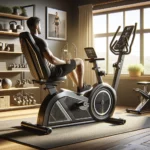
Many health experts believe lots of people don’t really know enough about how to use wrist weights and ankle weights properly. That’s why they contend that they do more harm than good.
However, do you really know how to use ankle weights? And are you certain you know how to use wrist weights correctly?
If you’re not familiar about how to use them, then they can negatively affect your balance and posture. They can also lead to a lot of injuries, especially to your joints.
Still, many people use them because they can help in many ways.
Thinking of buying wrist or ankle weights? Click here to check out our recommendations!
What are ankle and wrist weights good for?
There are plenty of benefits. But to maximize those benefits, you have to be very careful about your safety. So heed these tips on the proper use of ankle and wrist weights.
1. Ask Your Doctor About Using These Weights
These extra weights on your ankles and wrists don’t just stress out your muscles. They also exert force on your joints.
This means that using these weights may not be such a good idea if you already have problems with your joints. If that’s the case, these weights can just make things worse.
So you should really get checked out by your doctor first before you start with ankle and wrist weights. If you’re already experiencing some sort of joint problems or pain, then these problems can become exacerbated.
2. Don’t Use Them if You’re New to Exercise
Ankle weights are used to increase resistance. To translate to newbies, they’re there to make things harder. That’s the general rule in working out—if it’s too easy, then it’s not much help to you at all.
But if you’re a newbie, then exercising is already a challenge. It’s not going to be easy. So there’s no point in making things harder when it’s already difficult for you.
You can start jogging, running, and strenuous walking by taking it slowly. Then you can start running for a longer distance, and with a faster rate. After you’ve become used to all these, you can make things harder for you by running up stairs or uphill.
After that, you can use weights, but you have to introduce them to your workout slowly.
Start with just a pound of weight, and then monitor your posture and your gait. If you’re huge and a pound doesn’t seem to make thing harder anymore, you can go higher. But 3 pounds should be the max. Anything more than that can just be too much.
Too much extra weight can force you to compensate by having a different posture and form. The point is to make things harder—without forcing you to change your form.
That’s the same principle behind ankle weights exercises for speed. It doesn’t help you get faster if you’re changing the way you run when you’re encumbered with ankle and wrist weights.
3. Always Check for Discomfort and Pain
The overriding principle with ankle and wrist weights is that you have to be very careful.
One way of doing that is to make sure that you’re not uncomfortable in any way. And if you’re feeling some pain, stop immediately!
That’s especially true when you’re running. Running is actually very hard on your joints.
That’s why these ankle weights are great for water exercises. You can use the greater resistance they generate without putting too much stress on your joints.
4. Keeping Your Glutes Firm
With all these rules and tips in mind, you can use ankle weights exercises for glutes toning. Despite the light weight of these contraptions, they can help in firming up your buttocks.
Here are some tips on glutes exercises with ankle weights. The general tip is that you have to secure the ankle weights so they don’t shift around.
Kickbacks
- Get on the floor on your hands and knees.
- The wrists should be under the shoulders.
- The knees should be under the hips.
- Your arms and spine should be straight.
- Now breathe out, and then raise the right leg up toward the ceiling.
- Flex so your toes point right behind you.
- Raise the leg until your right thigh is parallel to the floor.
- Then take a deep breath, and gently get your right leg back to the starting position.
- Do this 15 to 20 times for the right leg.
- Then go for the left leg.
You can also add ankle weights for your standing leg lifts and leg swings. Just make sure you’re not straining your back. Keep to the proper form at all times.
5. Toning Your Abs
You can also use ankle weights exercises for abs training. The abs exercises can include leg raises, bicycle crunches, hanging knee raises, mountain climbers, and seated knee tucks.
Now you have to realize that these exercises can make thing more difficult for you. If they’re already too hard, it’s not really recommended that you add on the extra weight.
The main goal with the extra ankle weights is that you keep your proper form while you do these exercises. That will be the challenge you have to overcome. Engage your core each time.
6. The Importance of Proper Preparation
This means you have to take the time to stretch and warm up properly. You’re putting more stress on your joints and muscles with the wrist and ankle weights. So you have to be prepared for that.
Take at least 10 minutes to warm up and to stretch. If you don’t, injuries can become much more likely.
Conclusion
The experts do have a point when they say that ankle and wrist weights can do more harm than good. That’s because so many people use these weights incorrectly.
So be one of the few who knows how to do things right. Learn how to use how to use wrist weights and ankle weights correctly. That way, you can enjoy the benefits of the extra weight without incurring the extra risk. If you are interested in getting them, why not check out our expert reviews on the top ankle and wrist weights available.


